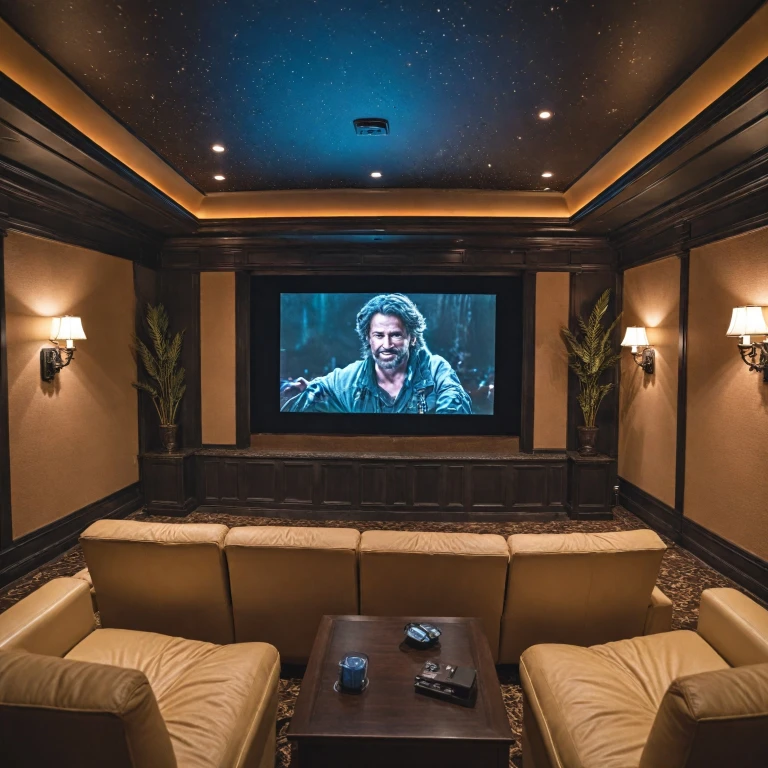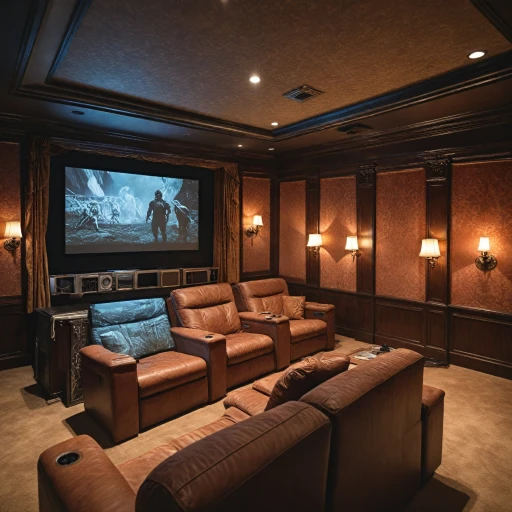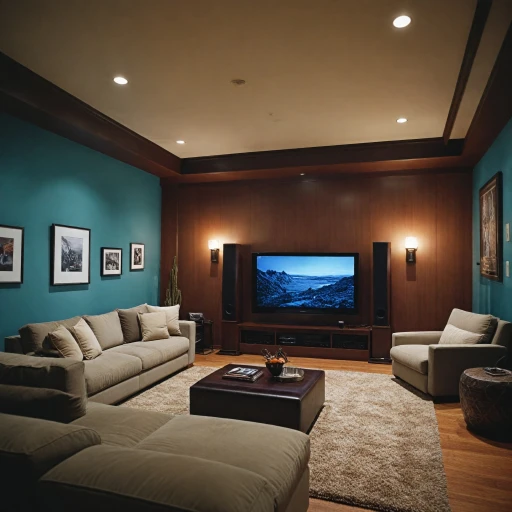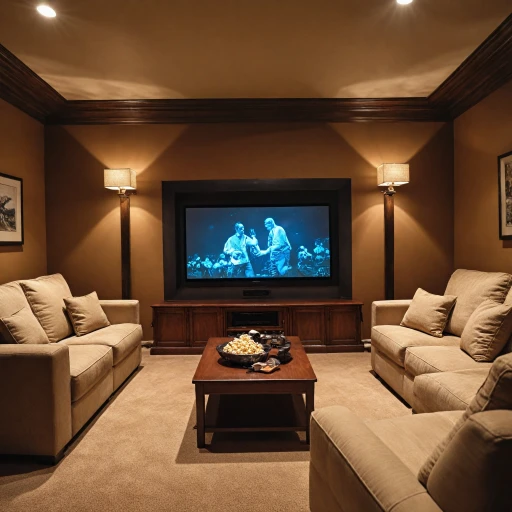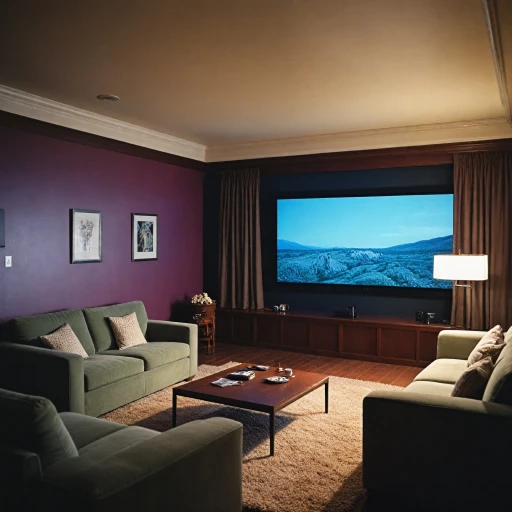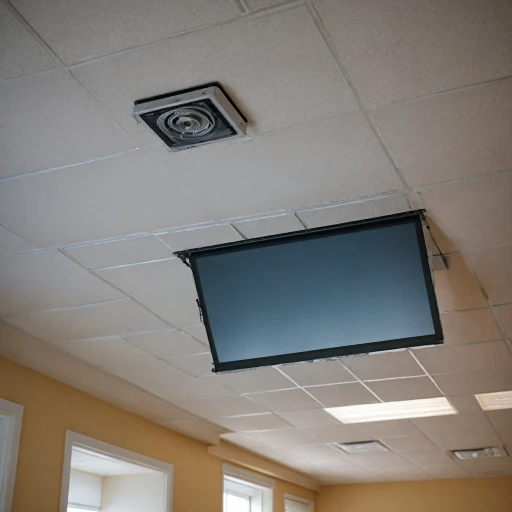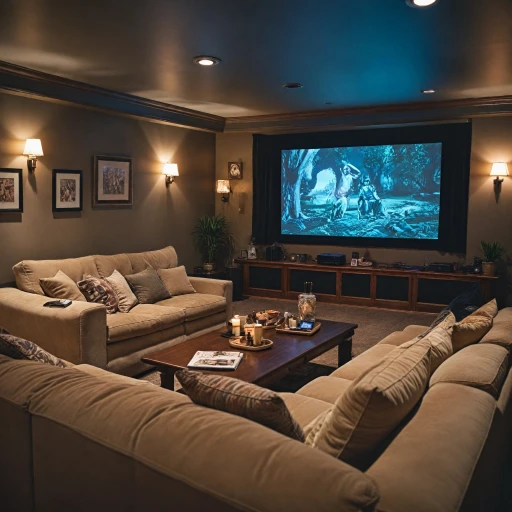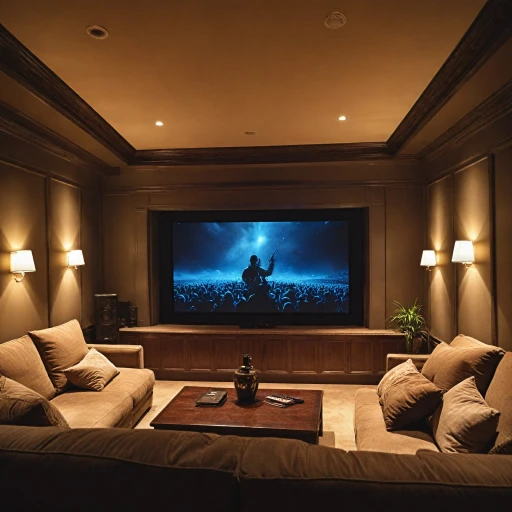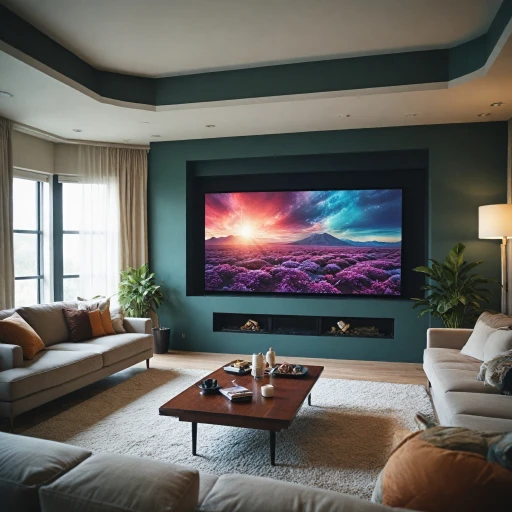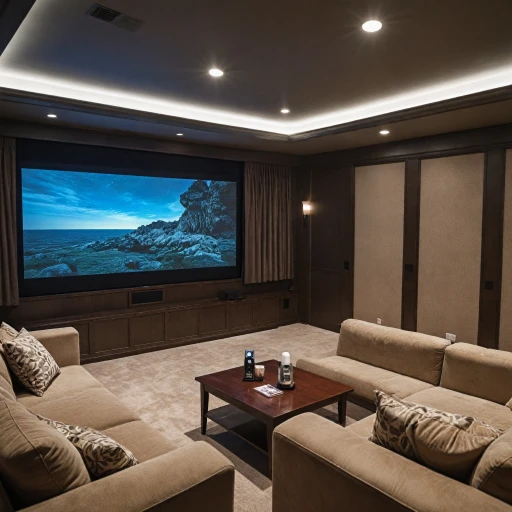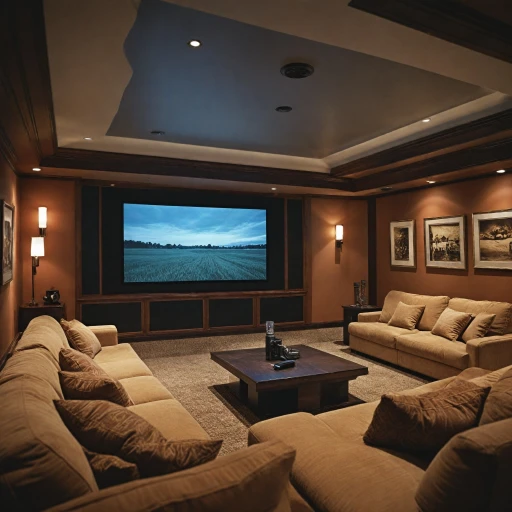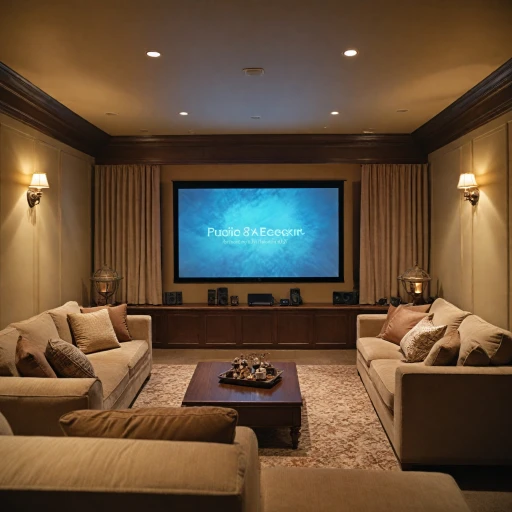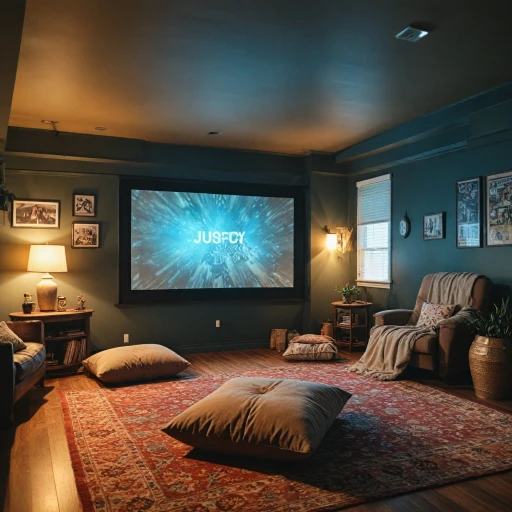
Understanding Screen Types
Exploring Different Types of Screens for Your Setup
When it comes to establishing a high-quality home theater experience, understanding the variety of projector screen options is essential. Choosing the right screen will greatly influence your viewing quality, impacting factors such as image clarity, brightness, and overall immersion. Let's dive into the various types of screens to consider. There are primarily two categories of screens you will come across: fixed frame screens and portable projector screens. For those looking to install a permanent screen, a fixed frame setup is ideal. These screens, such as the popular Silver Ticket or Elite Screens, provide a taut and immobile viewing surface, minimizing any disruptions during your entertainment sessions. Enhance your viewing experience with a fixed projector screen to ensure stability and long-lasting performance. Portable projector screens offer more flexibility, allowing you to easily pack and relocate them as needed. They are perfect for setups where permanent fixtures aren't an option. However, they might not deliver the same pristine image quality or stability as their fixed counterparts. When examining your options, remember to consider the potential for ambient light interference and the impact it could have on your projection quality. Fixed frame screens may offer better control over such variables, which is worth considering in tandem with your projector's capabilities. In the upcoming segments, we will delve deeper into the significance of screen materials and their impact on the quality of your home theater experience, as well as provide guidance on assessing the right size and aspect ratios for your space and budget. By addressing these elements in tandem, you can ensure you choose the perfect screen tailored to your needs.Screen Material Matters
Choosing the Right Material for Optimal Picture Quality
When setting up your home theater, selecting the appropriate screen material is crucial. The material you choose impacts the picture quality significantly, affecting brightness, contrast, and color accuracy which are vital for an immersive viewing experience.
Here's a breakdown of popular materials used for projector screens:
- White Material: Highly versatile for different projector types, including both regular and ultra short throw projectors. It offers excellent light reflection, ensuring brighter and more vibrant images.
- Silver Material: Known for maintaining high contrast and is often used with HDR projection. It's favorable in slightly lit environments and enhances color depth.
- Str Material: This is ideal for ambient light rejection screens, helping maintain picture clarity when room lighting conditions are not optimal.
- Black Material: It can be used with high-lumen projectors to deliver profound black levels, especially in fully dark rooms.
Choosing the right material also means considering how it interacts with your projector and room environment. For example, short throw projectors may pair better with screens specifically designed to minimize distortion at closer distances, enhancing the viewing angle and reducing picture anomalies.
Products from brands like Elite Screens, Awol Vision, and others offer diverse materials to cater to different home settings and preferences. Considering these options, alongside your project's specific needs, can maximize your investment without overextending your budget.
You can delve deeper into choosing the ideal material by visiting this comprehensive guide.
Size and Aspect Ratio Considerations
Considering Size and Aspect Ratios for Your Home Theater
Selecting the right size and aspect ratio for your home theater projector screen is crucial to maximize your viewing experience. It ensures that your projector's capabilities are fully utilized, delivering an immersive experience that mirrors a commercial cinema. First, think about the space where the screen will be placed. Measure the distance between the screen and your seating area to decide the ideal screen size. Larger screens are often more desirable but require adequate room to maintain a comfortable viewing angle. Common sizes range from 100 inches to 150 inches diagonally for home use, but personal preference and room dimensions should guide your choice. Next, consider the aspect ratio. The most popular options for home theaters are 16:9 and 2.35:1. A 16:9 aspect ratio is widely compatible with HD and HDR content. However, the 2.35:1 aspect ratio, known as Cinemascope, is perfect for movie enthusiasts who prefer a movie theater-like viewing at home as it reflects the broader format often used in cinemas. Also, remember that some projectors offer ultra short throw capabilities, allowing for larger screen sizes in tighter spaces, thanks to a shorter throw distance. When paired with the right projection screens, these projectors can deliver exceptional performance even in compact areas. Finally, if you’re considering upgrading your projection setup, it's worthwhile to explore VGA to HDMI converters, as they can significantly enhance compatibility and quality with modern devices. Remember, the right choice is a balance between your projector’s technical specifications, room size, and budget. Prioritize high-quality, properly sized projector screens to elevate your home theater experience without compromise.Ambient Light and Screen Placement
Managing Your Projection Environment
When setting up your dream home theater, paying attention to ambient light and screen placement is crucial. Properly managing these elements will affect the overall quality of the image projected on your home theater screen. Ambient light refers to the natural and artificial light present in your room. Too much ambient light can wash out your image, leaving your picture looking dull and lifeless. To combat this, you should consider the following strategies:- Screen Material: Opt for projection screens with materials that excel under specific lighting conditions. Silver and white materials often provide better contrast and color accuracy in bright rooms, while black or gray screens, like those made of specialized str materials, can enhance darkness and colors in dimmer environments.
- Screen Placement: Position your screen and projector correctly. Avoid placing your screen opposite windows or other sources of light. If your setup necessitates this, use thick curtains or blinds to control incoming light.
- Light Control: Use blackout curtains or shades to minimize exterior light. LED lights with dimming options can also help maintain control over ambient light in your home theater.
Budgeting for Your Screen
Balancing Quality with Budget
When planning your home theater setup, budgeting is crucial. Home projector screens come with a range of prices, determined by factors like material, size, and additional features. Striking the right balance between quality and budget is essential to getting the most out of your home theater experience.
Here's what to consider:
- Screen Material and Type: While silver or white materials may come at a higher price, they offer better color accuracy and contrast. Fixed frame projector screens are more expensive than portable ones, but they provide a sturdier viewing experience.
- Size and Aspect Ratio: Larger screens will increase costs, but sometimes a shorter throw projector and the right size will enhance the theater-like feel in your home without overspending.
- Brand Influence: Brands like Elite Screens, Awol Vision, and Silver Ticket may offer home theater screens with distinct features, affecting the price. Compare the options to find a balance between brand reliability and what fits in your budget.
Remember, sometimes spending a little more on a higher quality projection screen can save you money in the long run by minimizing the need for replacements and offering a better initial experience. Always consider both the current price and future maintenance costs. Buying during sales or with offers such as free delivery can also help reduce your initial outlay while still ensuring an ultra-immersive experience. With thoughtful planning, you can make the most of your investment and enjoy a stunning home theater setup.
Installation and Maintenance Tips
Mounting the Screen Like a Pro
Once you've decided on the perfect projection screen that fits both your home theater's needs and your budget, it’s time to talk installation. Proper installation is paramount for achieving an optimal viewing experience and protecting your investment. Whether you opt for a fixed frame screen, a portable projector screen, or something in-between, these tips can help you set up your theater space like a pro.
- Choose the Right Position: The location where you mount your screen matters. It should be at a comfortable viewing height and the screen's position relative to the projector will impact image quality. Keep in mind the throw distance and the recommended viewing angle, as these factors can significantly affect your viewing experience.
- Secure the Frame: For fixed frame projector screens, ensure that the frame is securely fastened. Most come with hardware designed for easy installation, so take advantage of these components to prevent accidents. A solid setup will sustain your screen, even through accidental bumps or routine cleaning.
- Adjust for Light Conditions: If your home theater is exposed to ambient light—perhaps from windows or adjacent rooms—you'll want to consider black or ultra-white material, or even a silver option, to help reflect light effectively. Products from brands like Elite Screens or Silver Ticket can provide excellent configurations that combat ambient light.
- Maintain Regularly: Screen material needs occasional upkeep. Dust and dirt can gather over time, detracting from the pristine image you're accustomed to. Regular, gentle cleaning on white material or silver surfaces will preserve their light-reflecting qualities.
- Stay Within Budget: As you plan for installation, remember that the price should align with your overall home theater goals. There’s no need to splurge if a regular price screen meets all your criteria. You might even save on costs with free delivery options available from several online retailers.
Proper installation and maintenance ensure your projector screen remains an integral part of your home cinema, providing entertainment that rivals the cinematic experience, saving on blockbuster tickets while enjoying the comfort of home.
